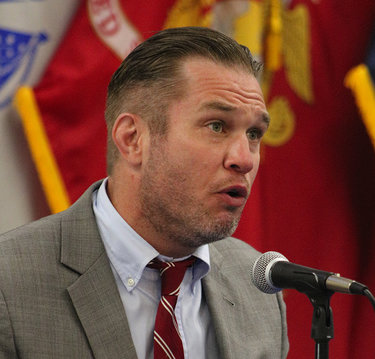Starting Wednesday, up to 25 people will be able to gather as Capital Region enters Phase 3
ALBANY COUNTY — Western New York started Phase 3 of reopening on Monday and the Capital Region is poised to follow on Wednesday.
“That’s exciting,” said Governor Andrew Cuomo at his press briefing in Westchester, speaking of the new regions to enter the third of four phases. “The rules and regulations of phase three are very clear. They’re all set out.”
He also announced “the lowest number of hospitalizations since this has started — amen. The lowest number of deaths on the three-day average since this has started.”
Because of the good numbers, Cuomo said, gatherings of 25 people — rather than a maximum of 10 — will be allowed for regions in Phase 3.
Cuomo also said, “People should follow the guidelines because the guidelines have been working … We have months of data now that says the guidelines make sense, keep following them because they are working.
“And everyone has a role to play in all of this as we’re reopening. Employers have a role, store owners have a role, employees have a role, individuals have a role, and local government has a real responsibility.”
At Albany County’s press briefing on Monday morning, Albany Public Library Executive Director Scott Jarzombek, describing those in his profession as information experts, praised McCoy and Albany County Health commissioner Elizabeth Whalen for “using information correctly,” collecting and posting COVID-19 data daily to help “guide us in a time there hasn’t been a lot of guidance.”
His staff returned to their buildings on Monday.
Information for libraries throughout the Upper Hudson Library System is posted online at UHLS.org. Local libraries over the last several weeks have outlined their reopening plans in their “Library Notes” columns in The Enterprise.
“Be patient with us,” urged Jarzombek. He also said of reopening libraries, “We just want to model for our community the right way to do it … We just need to do it slowly and with a level of intelligence using data.”
The governor’s thoughts as well as Jarzombek’s were echoed as Whalen said, “Our numbers continue to stay low, which is reassuring.” The county’s health department will continue to track those numbers daily, she said.
“In other parts of the country, we’re starting to see cases increase so it’s important to continue vigilance and continue the behaviors that we have taken part in to prevent the spread.”
These include social distancing, wearing a mask in public, and frequent hand-washing.
McCoy, too, cautioned that, although the numbers are down, “It doesn’t mean the virus went away.”
He also said, “We had all these protests going on and thank God our numbers didn’t go up.”
Whalen had two thoughts on why the cases of COVID-19 in Albany County haven’t spiked after so many protests. “First,” she said, “we’ve been doing what we needed to do for a long time … so there wasn’t a lot of COVID to circulate.”
Second, Whalen said, many protesters wore masks and were vigilant in trying to “respect other people’s spaces” despite the crowds.
“We need to remain vigilant if we want to continue the course that we’re on, which is to reopen,” said Whalen.
On the 96th day since McCoy reported the first two COVID-19 cases in Albany County, March 12, he reported on Monday morning that the county now has 1,828 confirmed cases with 367 residents under mandatory quarantine and one under precautionary quarantine.
Another county resident — a woman in her eighties — died on Sunday of the disease, bringing the county’s death toll for COVID-19 to 119.
The five-day average for new daily positive cases remains at 3.8.
So far, 5,388 county residents have completed quarantine, with 1,617 of them having tested positive and recovered.
Eleven residents are hospitalized with COVID-19, bringing the hospitalization rate to 0.6 percent.
With many people returning to work for Phase 3, McCoy announced, the county and the Whitney M. Young Health Center will do diagnostic COVID-19 tests on Thursday, June 18, from 9:30 a.m. to 1 p.m. at the Times Union Center.
The number to call for an appointment is 518-465-4771. McCoy said, if a lot of residents show up for the testing, the testing will be extended for more than one day.
Cuomo has frequently stated that widespread testing is imperative to track COVID-19 and stop its spread.
